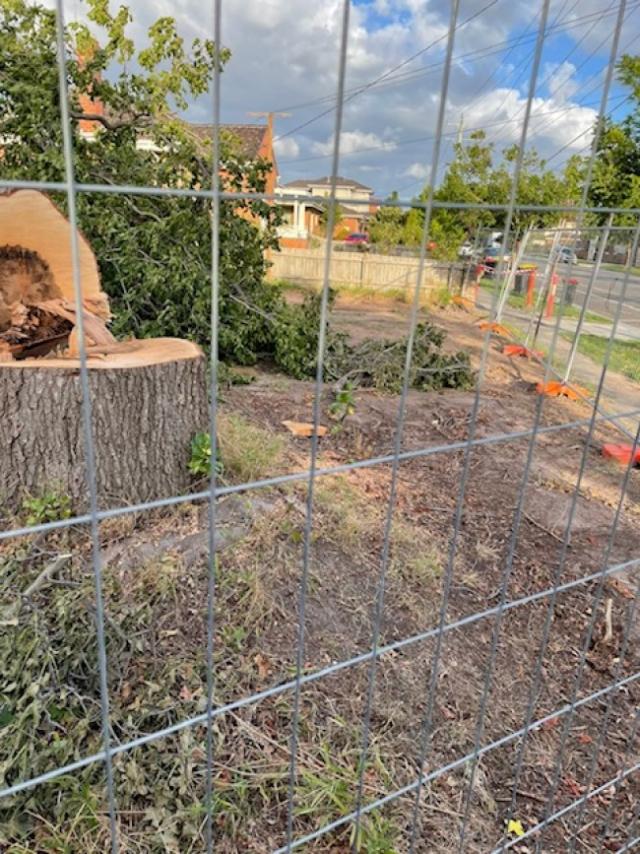The felling of one of the few shady trees in Herbert Street, Dandenong shows the gaps in the council’s tree protection laws, says a resident.
For decades, the deciduous tree – with a trunk diameter about 95 centimetres – stood in front of a single-storey dwelling.
Both house and garden were cleared to make way for a proposed four double-storey townhouses.
They are part of a raft of multi-storey developments including triple-storey apartments proposed on the street, at the edge of the Residential Growth Zone 2.
Greater Dandenong Council confirmed that a permit was not required to chop down the tree.
Nearby resident Brian Congues said the situation was the result of much talk, and no action for a local law to protect mature trees on private land.
“The tree was in a spot near the front fence which wouldn’t have impacted on the buildings at all.
“There’s 60 to 80 years of developing a beautiful canopy tree. It’s an example of not caring for our kids.”
After several years of debate, Greater Dandenong has agreed to create a local law to protect mature trees on private land – the controversial ‘third stage’ for boosting its sparse, vanishing tree coverage.
It is regarded as crucial for increasing canopy coverage from a paltry 9 per cent to 15 per cent of the council area by 2028.
This is still well short of the 30 per cent target set in the State Government’s Built Environment Climate Change Adaptation Action Plan 2022-2026.
“Increasing tree canopy for all cities and towns across Victoria can play an essential role in reducing urban heat exposure,” the plan states. It also “helps respond to future heat risks”.
According to the plan, Dandenong is rated among the highest risk areas on the ‘heat vulnerability index’ in Melbourne. It takes into account land coverage, population density and age, and socio-economic disadvantage.
Council reports have stated that extensive planting on public land won’t be enough to reach even the 15 per cent target. Private land makes up 73 per cent of the municipality.
Since 2016, the council area has lost a further 0.9 per cent of canopy – down from 9.9 per cent to 9.0 per cent.
The strategy had been voted down by councillors in 2019 – despite 89 per cent support from surveyed residents.
The delays seemed to “pander to developers” and “treated the residents as fools” as blocks were cleared, Mr Congues said.
Under current landscaping plans, developers could replace a removed towering tree with a sapling, he said.
In the past three years, nearly 3000 trees have been removed in Greater Dandenong.
The council has planted more than 9600 street and park trees in that time but they won’t provide canopy cover for at least 20 years.
Mr Congues said a local law “with teeth” requiring a trigger of tree diameters of 35 centimetres and more. That was the benchmark set by some neighbouring council areas.
In the case of Herbert Street, the lack of a local law also diminished the effect of the council creating a nearby pocket park, he said.
“The bigger picture is maintaining what canopy coverage there is and adding to it, not subtracting from what’s there and putting in pocket parks.
“Without these trees, people don’t have that refuge in summer.
“They want people walking everywhere but they need that shade, that canopy tree to rest under.”
A State Parliament inquiry into environmental infrastructure for growing populations last week called for the Government to install stronger and more consistent tree canopy controls across Melbourne, particularly with respect to trees on public open space and restricted public land.
City of Greater Dandenong’s city planning director Jody Bosman said the proposed tree protection local law is currently being developed, with the permit trigger “yet to be finalised”.
“Once the proposed local law has been developed, it will be subject to a community consultation process.”
Mr Bosman said works on the Herbert Street pocket park will start in February.








